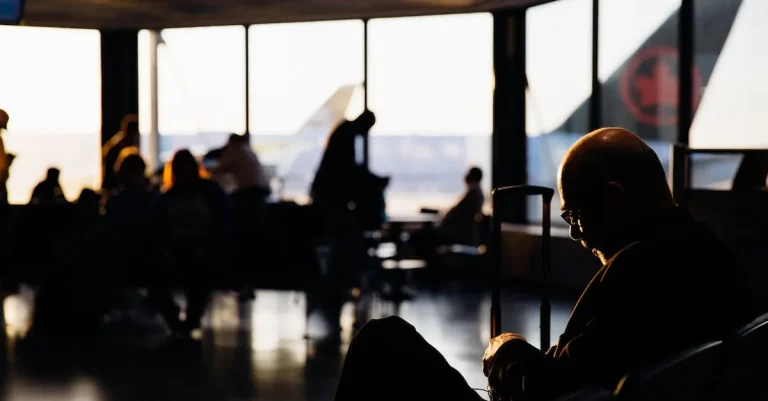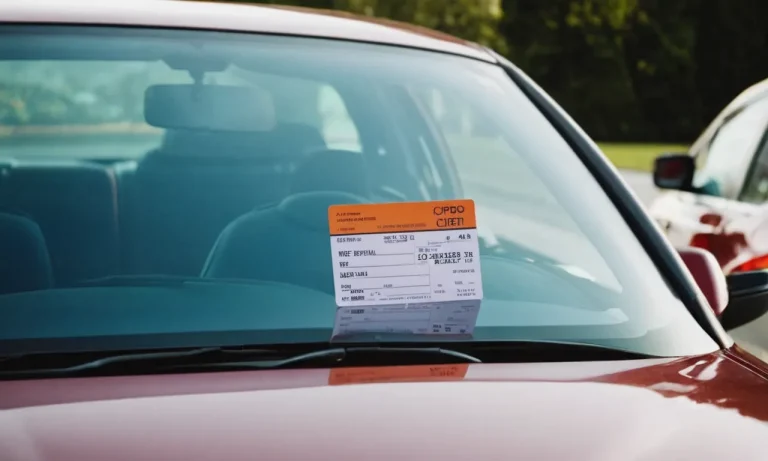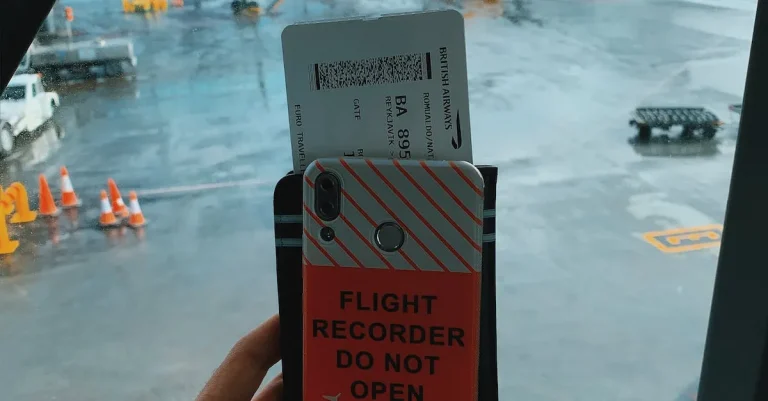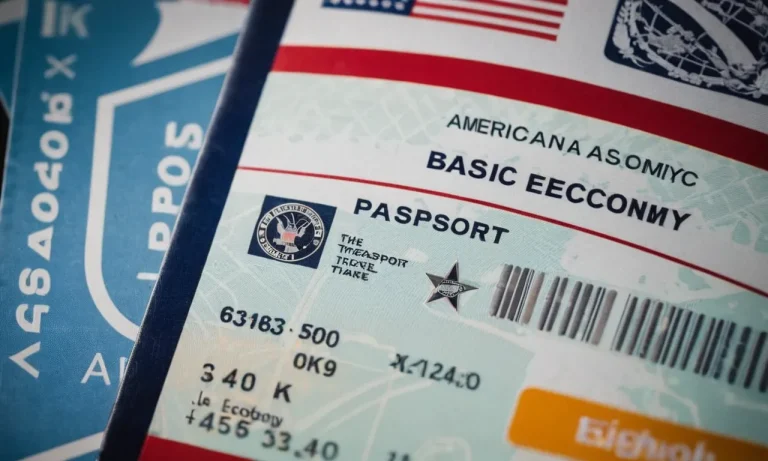Have you ever been on a flight that was suddenly diverted to a different airport than originally scheduled? If so, you’re not alone. Flight diversions are more common than many travelers realize.
When a flight diversion occurs, it understandably leads to a lot of questions and confusion among passengers.
If you don’t have time to read this entire article, here’s a quick answer:
A flight diversion means the scheduled destination airport has changed, requiring the plane to land somewhere else. This usually happens due to weather issues, airport closure, or a medical emergency onboard.
What Exactly is a Flight Diversion?
Flight diversion refers to the situation when a flight’s planned route and destination airport are changed mid-flight. It can happen for various reasons, such as weather conditions, airport issues, or medical emergencies.
When a flight is diverted, it means that the pilot has made the decision to land the aircraft at an alternative airport instead of continuing to the original destination.
The flight path and destination airport are changed mid-route
During a flight diversion, the pilot deviates from the planned flight path and chooses an alternative airport to land.
This change can be due to a variety of factors, including adverse weather conditions, technical problems with the aircraft, or air traffic control restrictions.
The decision to divert a flight is made with the safety and well-being of the passengers and crew as the top priority.
Diversions are usually to the closest suitable airport
When a flight is diverted, the pilot aims to land at the closest suitable airport that can accommodate the aircraft and provide necessary services.
This could be an airport along the original flight route or in close proximity to the aircraft’s current location.
The choice of the diversion airport depends on factors such as runway length, availability of ground services, and the ability to handle the specific aircraft type.
Diversions most often happen for weather, airport issues or medical emergencies
Flight diversions occur most frequently due to three main reasons: weather conditions, airport issues, or medical emergencies.
Inclement weather, such as thunderstorms, hurricanes, or heavy snowfall, can make it unsafe or impossible to continue the flight to the original destination.
Airport issues, such as runway closures or air traffic control problems, may also necessitate a diversion.
Additionally, medical emergencies on board, such as a passenger falling seriously ill or requiring urgent medical attention, can prompt a diversion to ensure prompt medical care.
Common Reasons for Flight Diversions
Bad weather conditions at the destination airport
One of the most common reasons for flight diversions is bad weather conditions at the destination airport.
Airlines prioritize the safety of their passengers and crew, and if the weather conditions at the original destination pose a risk, the flight may be diverted to an alternate airport.
This can happen due to heavy rain, thunderstorms, snowstorms, or strong winds that make it unsafe for the plane to land.
For example, if there is a severe thunderstorm at the destination airport, with lightning and strong winds, the pilot may decide to divert the flight to a nearby airport where the weather conditions are more favorable.
This ensures that the passengers and crew are not exposed to unnecessary risks during landing.
An emergency landing is required
In some cases, a flight diversion may occur due to an emergency on board that requires an immediate landing.
This could be a medical emergency, such as a passenger falling seriously ill or experiencing a medical condition that requires urgent attention.
The pilot may choose to divert the flight to the nearest airport with suitable medical facilities to ensure that the passenger receives prompt medical assistance.
Similarly, if there is a technical issue with the aircraft that poses a safety concern, the pilot may opt for an emergency landing.
This could include engine failure, smoke in the cabin, or any other malfunction that affects the operational capability of the plane.
The destination airport is unexpectedly closed
At times, flight diversions occur because the destination airport unexpectedly closes. This could be due to a variety of reasons, such as a security threat, runway maintenance, or an air traffic control issue.
When the airport is closed, the flight is redirected to an alternate airport where it can safely land and passengers can disembark.
For instance, if there is a security threat at the destination airport, such as a bomb threat or suspicious activity, the authorities may decide to shut down the airport temporarily to ensure the safety of everyone on the ground.
In such cases, flights scheduled to land at that airport would be diverted to other airports in the vicinity.
A security threat or medical issue on board
Another common reason for flight diversions is a security threat or a serious medical issue on board.
If there is a passenger behaving suspiciously or making threats, the crew may decide to divert the flight to the nearest airport where the passenger can be handed over to the authorities for further investigation.
In the case of a medical emergency, the pilot may choose to divert the flight to an airport with adequate medical facilities to ensure that the passenger receives prompt medical attention.
This could include situations like a heart attack, stroke, or any other medical condition that requires immediate intervention.
Flight diversions are a necessary measure to ensure the safety and well-being of passengers and crew. While they may cause inconvenience and delays, they are ultimately taken to mitigate risks and address emergencies effectively.
What Happens When a Flight is Diverted
The pilot will announce the diversion to passengers
When a flight is diverted, the pilot will make an announcement to inform the passengers about the change in flight plans. This announcement is crucial to keep the passengers updated and calm.
The pilot will explain the reason for the diversion, whether it is due to bad weather conditions, technical issues with the aircraft, or any other unforeseen circumstances.
The plane will land at an alternate, nearby airport
Once the decision to divert the flight has been made, the plane will be directed to land at an alternate airport nearby.
The choice of the alternate airport depends on various factors such as availability, runway length, and facilities.
Airlines have protocols in place to ensure the safety and comfort of the passengers during the landing and subsequent procedures at the alternate airport.
Passengers usually have to wait onboard until given further instructions
After landing at the alternate airport, passengers are typically required to remain onboard the aircraft until further instructions are given.
This is done to maintain order and ensure that the airline staff can efficiently handle the situation.
During this time, the crew will assess the situation, communicate with relevant authorities, and make arrangements for the passengers’ next steps.
Delays, accommodations, or a new flight will be arranged by the airline
Once the airline has evaluated the situation, they will make arrangements for the passengers.
This may include rescheduling the flight, providing accommodations such as hotel stays or meals, or arranging alternative transportation to the intended destination.
The airline’s priority is to minimize inconvenience and ensure the well-being of the passengers affected by the diversion.
In some cases, flights are diverted for reasons beyond the airline’s control, such as severe weather conditions or security concerns.
It’s important to note that while flight diversions can be inconvenient and frustrating for passengers, they are primarily done to prioritize safety and ensure the well-being of everyone on board.

Your Rights as a Passenger When Your Flight is Diverted
The airline must provide regular updates and assistance
When your flight is diverted, it can be a frustrating and inconvenient experience. However, as a passenger, it’s important to know that you have rights in this situation.
One of the key rights is that the airline must provide you with regular updates and assistance throughout the diversion process.
According to the U.S. Department of Transportation, airlines are required to keep passengers informed of the reason for the diversion, the estimated length of the delay, and any other relevant information.
This ensures that you are aware of what is happening and can make informed decisions.
In addition to updates, the airline must also provide assistance, such as helping you make alternate travel arrangements if necessary.
They should have staff available to answer your questions and address any concerns you may have.
Remember, it’s always a good idea to stay calm and polite when interacting with airline staff, as they are there to help you.
Food, accommodations, and amenities must be provided after long delays
If your flight is diverted and you experience a lengthy delay, the airline is responsible for providing you with certain amenities. This includes food, accommodations, and access to necessary amenities.
According to the U.S. Department of Transportation, if the diversion results in an overnight delay, the airline must provide you with hotel accommodations. They should also provide meals and transportation to and from the hotel.
This ensures that you have a comfortable place to stay and access to necessary facilities.
It’s important to note that the specific details of what the airline is required to provide may vary based on the airline’s policies and the circumstances of the diversion.
However, as a general rule, you should expect to be provided with the necessary essentials for your comfort and well-being during the delay.
You have the right to compensation or a refund for major diversions
In cases of major diversions, where the airline is unable to transport you to your intended destination, you may be entitled to compensation or a refund.
This is especially true if the diversion results in a significant delay or if you are unable to reach your destination within a reasonable time.
Additionally, if the diversion results in a significant delay and you choose not to continue with the flight, you may have the right to a refund for the unused portion of your ticket.
It’s important to be aware of your rights as a passenger when your flight is diverted.
Understanding what the airline is required to provide can help you navigate the situation more effectively and ensure that you are treated fairly.
Tips for Dealing With a Diverted Flight
Stay calm and listen to crew instructions
Experiencing a diverted flight can be stressful and frustrating, but it’s important to stay calm and follow the instructions given by the flight crew.
They are trained to handle these situations and will provide you with the necessary information and guidance.
Remember, panicking or causing a scene will only make the situation more challenging for everyone involved. So take a deep breath, remain composed, and trust in the expertise of the crew.
Notify anyone meeting you of the change in plans
When a flight is diverted, it’s essential to inform anyone who is supposed to meet you at the original destination about the change in plans.
This could be family members, friends, or even a car service that was scheduled to pick you up.
By letting them know about the diversion, they can adjust their plans accordingly and make arrangements for your new arrival location.
Don’t forget to provide them with updates as the situation progresses, so they can plan accordingly.
Be patient as delays are usually out of the airline’s control
Diverted flights often result in delays, and it’s important to understand that these delays are usually out of the airline’s control.
Factors such as weather conditions, air traffic congestion, or safety concerns may necessitate a diversion.
While it can be frustrating to deal with these delays, it’s important to remain patient and understanding.
Airlines will usually do their best to provide alternative travel arrangements or accommodations, but it may take some time to get everything sorted out.
Always have backup plans for accommodations or ground transportation
One way to minimize the inconvenience of a diverted flight is to always have backup plans for accommodations or ground transportation.
This means having a list of hotels or alternative lodging options in the vicinity of the diversion airport, as well as knowing the local transportation options.
In some cases, the airline may provide vouchers or assistance with finding accommodations, but it’s always good to have your own backup plans in case such assistance is not readily available.
Doing some research beforehand can save you precious time and reduce stress in these situations.
Remember, a diverted flight is an unexpected event that can disrupt your travel plans.
However, by staying calm, communicating with those who need to know, being patient, and having backup plans in place, you can navigate through the situation with greater ease.
Keep in mind that the airline’s primary concern is your safety, and they will do their best to minimize any inconvenience caused by the diversion.
Conclusion
While flight diversions can be frustrating and lead to extensive delays, try to keep in mind they are done with passenger safety in mind. The crew will work to get you rebooked and on your way as quickly as possible.
Remaining flexible and understanding will help you better handle these challenging travel interruptions.






